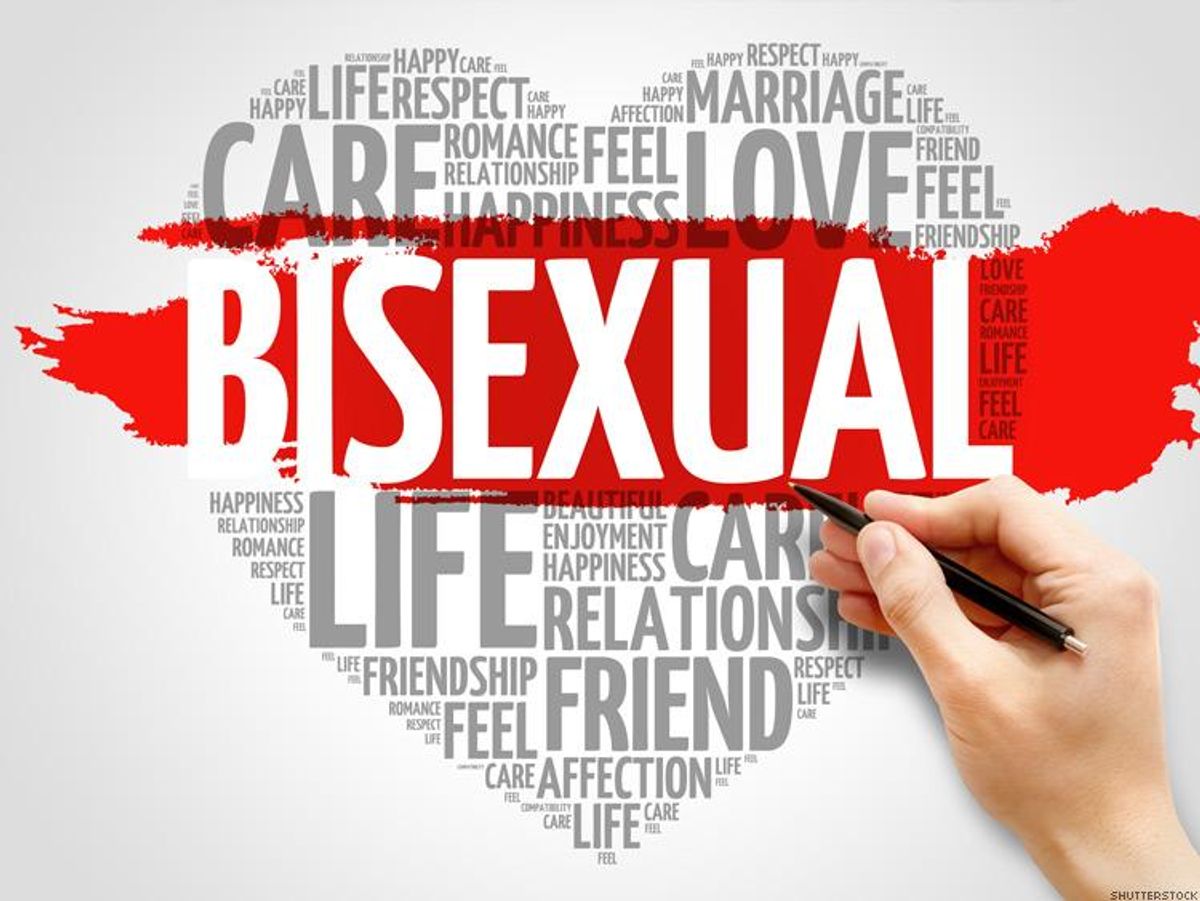Voices
Addressing the Most Forgotten Letter in LGBT

Bisexual people are struggling more than we ever knew, according to a new report from the Movement Advancement Project.
September 27 2016 1:02 AM EST
October 31 2024 7:01 AM EST
By continuing to use our site, you agree to our Private Policy and Terms of Use.

Bisexual people are struggling more than we ever knew, according to a new report from the Movement Advancement Project.
Despite making up more than half of the lesbian, gay, and bisexual population, bisexual people are often overlooked and invisible. Bisexual people are frequently assumed to be gay, lesbian, or heterosexual based on the gender of their partner. Yet when bisexual people are open about their sexuality, they face increased levels of violence from intimate partners; rejection by community, family, and peers; and skepticism from the people and organizations whom they turn to for help, resources, and services.
Consider this: Only 20 percent of bisexual people say that there is social acceptance of lesbian, gay and bisexual people where they live, compared to 31 percent of lesbians and 39 percent of gay men. While these social acceptance numbers are too low across the board, bisexual people are rarely explicitly considered separately from lesbian and gay people. Rather, bisexual people are swept into the greater lesbian, gay, and bisexual population, their specific disparities made invisible within data about the population as a whole.
The Movement Advancement Project and a broad coalition of partners released a groundbreaking report today, coinciding with last week's #BiWeek and Monday's monumental meeting at the White House on federal initiatives to serve and support bisexual people. Invisible Majority: The Disparities Facing Bisexual People and How to Remedy Them focuses on the "invisible majority" of the LGBT community, the nearly 5 million adults in the U.S. who identify as bisexual and the millions more who have sexual or romantic attraction to or contact with people of more than one gender. The report shows how bias, stigma, and invisibility lead to alarming rates of societal rejection, violence, discrimination, and poor physical and mental health.
While researching for this report, we encountered sentiment after sentiment like the following:
"I would never tell anyone. I'll go to my grave with this."
"I've had people tell me that my life is worthless because I'm bisexual, and that I'm nothing."
"I came out to him and I told him and then he just kicked me out."
"My co-worker said 'Well, sure -- thing is, you'll tell us you want A now, but in a few months you'll want B.'"
Bisexual people face bias from many fronts: from friends and family; from service providers and employers; from heterosexual people; but also from gay and lesbian people.
Bisexual youth face bias and discrimination from peers and family and have higher incidents of some risk behaviors than gay, lesbian, and heterosexual youth. In order to best serve bisexual youth, laws must prohibit discrimination against bisexual youth, and schools should provide teachers and educational professionals with the cultural competency training that explicitly includes bisexual students.
Bisexual people face very high levels of violence from intimate partners, from fellow students, and from fellow inmates when incarcerated. Service providers to violence survivors must understand these risk factors and know how best to serve bisexual clients.
Bisexual youth and adults have poorer mental health and higher self-reported rates of suicidal ideation and behavior than gay, lesbian, and heterosexual youth and adults. (In the general population, poor mental health conditions have been found to contribute significantly to suicide, although many other individual, interpersonal, community, and societal factors also clearly increase suicide risk). More funding should be directed both into researching the factors contributing to poorer mental health for bisexual people and into competently serving bisexual people who need comprehensive mental health services.
Throughout our research, we also found stories of hope and resilience:
"Apphia went on to file the first successful recorded claim for asylum based on her bisexual identity."
"My efforts made a difference in in lives of people living with HIV/AIDS, however, my active open voice through writing and speaking without fear [as a bisexual person] has had a greater impact."
Given that bisexual people make up more than half of the lesbian, gay, and bisexual community, LGBT service providers, such as those providing youth programming, mental health services, and legal assistance, must be able to competently serve bisexual people or risk excluding over half of the people who deeply need their services.
Each publication and study cited through this report paints the same picture: bisexual people are afraid to be open about their sexual orientation and if they are openly bisexual, they face bias and a distinct lack of support. This report should serve as a clarion call to policymakers and service providers across the country: In order to fully serve the LGBT community, we must also fully serve the bisexual community.
HERON GREENESMITH, Esq., is the LGBT movement and policy analyst at the Movement Advancement Project.